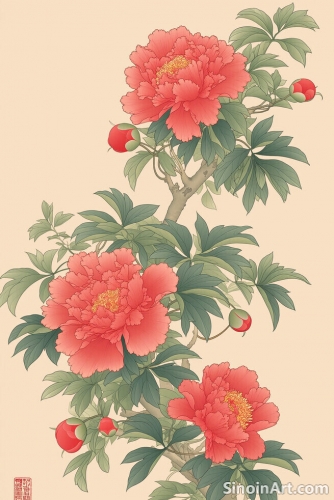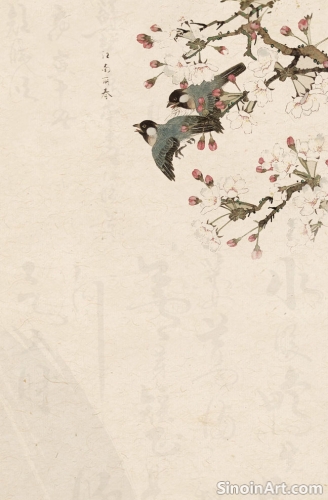The Conservation and Care of Gongbi Paintings
|
Gongbi paintings, with their delicate rice paper support and natural pigments, require special care and attention to ensure their longevity. Proper conservation techniques and preventative measures are essential to preserve these works for future generations. Understanding how to care for these delicate artworks is essential for any art collector.  The most important aspect of conserving Gongbi paintings is controlling their environment. The paper is particularly sensitive to humidity and drastic changes in temperature. The artworks should be kept away from direct sunlight, moisture, and dramatic fluctuations in temperature. A stable environment is crucial for preventing damage.  When storing Gongbi paintings, they should be placed in acid-free folders or sleeves and stored flat to prevent creasing or tearing. If the painting needs to be rolled, use a large diameter core and store the work in an acid free wrapper. Careful handling of these delicate works is essential for keeping them in good condition.  Framing is also important for protecting Gongbi paintings. Ensure the painting is framed with archival-quality materials, including acid-free matting and UV-protective glass or acrylic. This added layer of protection will greatly increase the lifespan of the piece. Cleaning and restoration of Gongbi paintings should only be undertaken by trained conservators. Attempting to clean or repair the painting yourself could cause irreversible damage. When in doubt, always consult with a trained conservator. Finally, regular inspection of Gongbi paintings is essential for detecting any potential problems early on. Look for signs of fading, cracking, or pest infestation. Any issues should be addressed as soon as they are detected. Regular inspection and maintenance can help catch problems before they become major issues. By taking proper precautions and following these guidelines, collectors can help ensure that their Gongbi paintings will be enjoyed for many years to come. The care taken for these works will preserve their cultural value and ensure they remain a piece of artistic history. |
Tag : Gongbi conservation, art preservation, painting care, art storage, art restoration
Related information
- The Spiritual Dimensions of Gongbi Painting
- Gongbi and the Depiction of Water: Flow, Reflection, and Atmosphere
- The Use of Texture in Gongbi Painting
- Famous Gongbi Artists: Masters of the Meticulous Brush
- Gongbi Painting and its Use in Book Illustration
This article delves into the spiritual dimensions of Gongbi painting, highlighting how the meticulous process, symbolic subject matter, and spiritual intentions of the artist create a deep connection with the natural and divine realms.
The depiction of water, with all its fluidity, dynamism, and reflective qualities, is a significant element in many Gongbi paintings. Artists employ a variety of techniques to capture the movement, texture, and atmospheric effects of water, ranging from still ponds and meandering streams to rushing waterfalls and expansive seas. The depiction of water is often a central element of a successful composition, adding depth and beauty to a piece.
This article explores the use of texture in Gongbi painting, highlighting the techniques of layering color washes, varying ink density, and using specific brushstrokes to simulate the appearance of different surfaces and enhance the overall visual realism of the artwork.
This article highlights the contributions of famous Gongbi artists throughout history, including Emperor Huizong, Li Tang, Qiu Ying, and Chen Hongshou, discussing their unique styles and influence on the tradition.
This article explores the use of Gongbi painting in book illustration, highlighting its ability to bring narratives to life through detailed depictions, accurate representations, and vibrant colors, and how this enhances the reader's understanding and appreciation of the text.